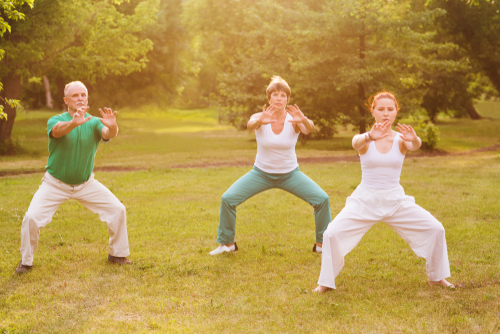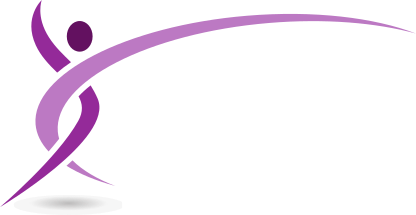
(also spelled Kwa and, less commonly, Kwah).
In class you will often hear “open the Kua” or “sink into the Kua”.
In western understanding, this is generally taken to refer to the inguinal crease or groin.
Technically, the Kua are the “lateral articulation of the ball and socket joints, consisting of the head of the femur (thigh bone) into the pelvis.” This area connects your upper and lower body and is variously referred to as the crotch, groin, or hips. The Kua run from the inguinal ligament through the inside of the pelvis to crest of the hip bones. Some experts state that the Kua consists of the entire hip area, often including the Kua’s relationship with the torso and the thigh, plus the muscles that connect the legs to the spine.
The Kua is responsible for integrating the upper and lower body. Without the integration, the upper and lower body cannot work together. Even though the descriptions of the area vary, we know that the area is extremely important in our movements.
Tai Chi movements are generated by rotation of the joints (Kua). This is unique because movement is not generated by muscles and/or various parts of the body either pulling or pushing. The inner hips push outward/forward, while the outside of the hips are held inward which makes your stance more stable (like riding a horse).
The Kua are very large joints and contain some of the strongest muscles in the body. This is the area that we use when we are serious about lifting something correctly. We fold at the inguinal crease (Kua) to activate and coordinate the efforts of our leg, back, abdominal, and buttock muscles.
This inguinal crease also contains the largest number of lymph nodes in the body. Lymph, as you may know, is moved by muscle contractions and is critical in order to maintain the body’s immune system.
- Correct alignment removes tension and restriction from the body.
- When you crease your Kua, your range of motion will increase.
- When you crease your Kua, this gives you the ability to immediately respond to an attack or threat when necessary!
- If the Kua is not open, movement is resisted and the knee twists.
- Using your Kua correctly will improve your body coordination.
- The higher your skill in connecting the Kua, the better your body integration will be.
- When we open the Kua, Qi flows throughout the body. If the Kua are closed or restricted, Qi flow is restricted and clogged.
Moving from the Kua:
Kua turning is used in Tai Chi and Qigong, as well as internal Kung Fu styles (Baguazhang and Xingyiquan). In Tai Chi, we talk about the waist. However, the work is actually done by the Kua.
Movements are coordinated and proportional to the size of a joint. The Kau are large joints, so the movements will be significant. This is crucial to understand. When we move from the Kua we need to focus on the inside (not outside of the hip joint). In other words, when we open and close the Kua, our movements will be relaxed, coordinated, and balanced.
The trunk needs to be moved as one part or unit. However, this cannot happen unless the Kua are properly aligned. The trunk, the waist and the torso must be aligned and erect, sitting on top of both legs. Both Kua must move in a coordinated fashion to ensure that the trunk is always erect and level when sitting on top of them. They are then able to guide the waist and trunk as well as adjust the actions involved in maneuvering and changing direction.
You will often rotate one Kua against the other. When they come towards each other, your waist will turn. When you rotate both Kua, this will cause the waist and Dantian to turn.
If knee actions are incorrect, the Kua can be pushed out of alignment. Therefore, it is important to be aware of the coordination of the Kua and the knees.
Unfortunately, we frequently see students turning from the shoulders, or leading with the arms. They are turning from the “top” of the Dantian instead of the “bottom” of the Dantian – Kua location. This has a negative effect on their form, balance, coordination, range of motion, and more. In addition, Qi flow becomes restricted, clogged, or totally diminished.
In a Bow stance (with the weight on the front leg) the back Kua needs to be open. When you sit back on your rear leg, you need to ensure that the front Kua is open. This will keep your knee from collapsing which, unfortunately, is common when learning to practice Tai Chi or Qigong. It is obviously not good for your knee nor the rest of your body.
Interestingly, if even one Kua disengages from the lower Dantian, movements will unbalanced, unstable, and generally incorrect.
Locating your Kua:
In order to feel the Kua, do a semi-squat (not very deep) like sitting on a chair, and then open your knees sideways. You should feel your inguinal creases open and your stance should feel balanced and grounded. When you return to a standing position, don’t use your knees! Push your Kua forward, which closes them and protects your knees from injury.
